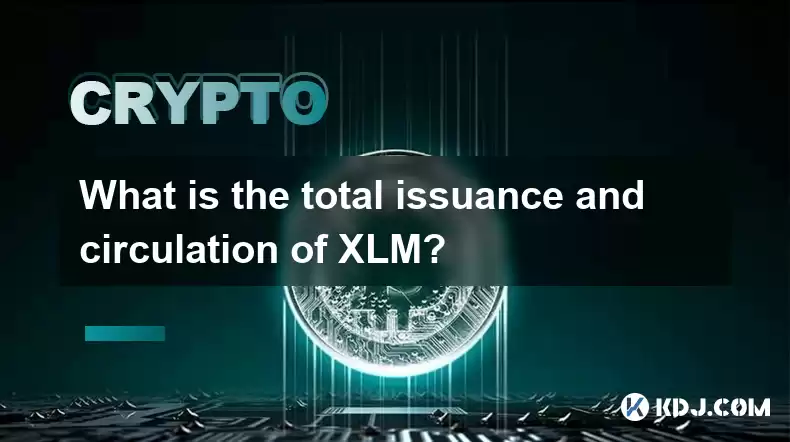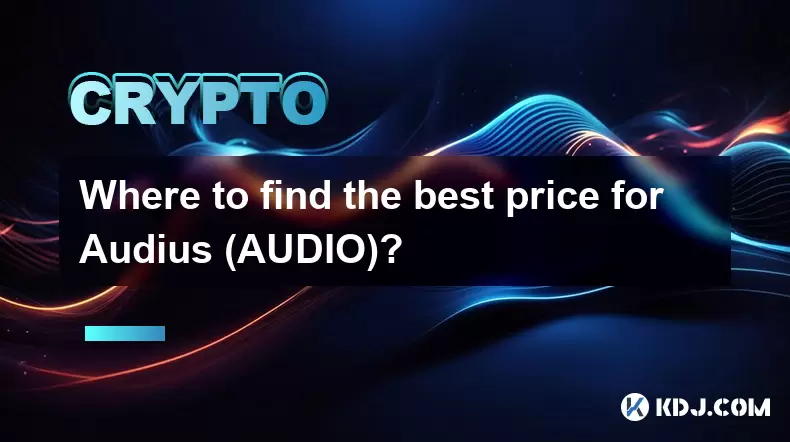-
 Bitcoin
Bitcoin $118900
-2.33% -
 Ethereum
Ethereum $4288
-0.13% -
 XRP
XRP $3.151
-3.21% -
 Tether USDt
Tether USDt $1.000
0.02% -
 BNB
BNB $809.5
-1.17% -
 Solana
Solana $175.7
-4.75% -
 USDC
USDC $0.0000
0.01% -
 Dogecoin
Dogecoin $0.2246
-5.75% -
 TRON
TRON $0.3473
2.19% -
 Cardano
Cardano $0.7809
-5.18% -
 Chainlink
Chainlink $21.38
-3.48% -
 Hyperliquid
Hyperliquid $43.29
-5.53% -
 Stellar
Stellar $0.4375
-3.21% -
 Sui
Sui $3.685
-6.68% -
 Bitcoin Cash
Bitcoin Cash $595.2
3.50% -
 Hedera
Hedera $0.2483
-6.60% -
 Ethena USDe
Ethena USDe $1.001
-0.01% -
 Avalanche
Avalanche $23.03
-5.28% -
 Litecoin
Litecoin $119.5
-5.02% -
 Toncoin
Toncoin $3.395
-0.07% -
 UNUS SED LEO
UNUS SED LEO $9.007
-1.19% -
 Shiba Inu
Shiba Inu $0.00001304
-5.44% -
 Uniswap
Uniswap $11.35
1.57% -
 Polkadot
Polkadot $3.898
-5.43% -
 Cronos
Cronos $0.1671
-0.16% -
 Ethena
Ethena $0.8121
-2.45% -
 Dai
Dai $1.000
0.02% -
 Bitget Token
Bitget Token $4.412
-1.73% -
 Monero
Monero $264.0
-0.64% -
 Pepe
Pepe $0.00001128
-8.12%
What is the total issuance and circulation of XLM?
XLM's total supply is fixed at 50 billion, but its circulating supply fluctuates, impacting market cap and price. Real-time data is available on sites like CoinMarketCap.
Mar 11, 2025 at 03:51 am

Key Points:
- Stellar Lumens (XLM) has a fixed total supply, unlike many cryptocurrencies with unbounded or gradually increasing supply.
- The total issuance of XLM is capped at 50 billion tokens.
- The circulating supply of XLM fluctuates but is generally a significant portion of the total supply. This number is publicly trackable on various cryptocurrency data websites.
- Understanding the difference between total issuance and circulating supply is crucial for evaluating XLM's market capitalization and potential price movements.
- The distribution of XLM has implications for its price stability and decentralization.
What is the total issuance and circulation of XLM?
Stellar Lumens (XLM) operates on a fundamentally different model compared to many other cryptocurrencies regarding its supply. Unlike Bitcoin's gradually increasing supply or Ethereum's potentially infinite supply, XLM boasts a fixed, predetermined total supply. This total supply is capped at 50 billion XLM tokens. This fixed supply is a key element of Stellar's design and is intended to contribute to price stability by preventing inflation stemming from continuous token creation. However, the actual number of XLM in circulation can vary.
The circulating supply refers to the number of XLM tokens actively in use within the Stellar network. This includes tokens held by individuals, exchanges, and businesses. The circulating supply is not a static number; it fluctuates based on trading activity, staking, and other on-chain activities. Various cryptocurrency tracking websites provide real-time updates on the current circulating supply of XLM. While the total supply remains constant at 50 billion, the circulating supply provides a more accurate picture of the tokens actively participating in the market.
The difference between the total issuance (50 billion XLM) and the circulating supply is significant. The difference represents tokens that are not currently actively circulating in the market. These tokens might be held in long-term reserves, locked in escrow, or otherwise unavailable for immediate trading. Understanding this distinction is vital for accurately assessing XLM's market capitalization and predicting potential price fluctuations. A lower circulating supply relative to the total supply can potentially lead to higher price volatility due to increased demand in a constrained supply environment.
The initial distribution of XLM played a critical role in shaping its early ecosystem. A portion of the tokens was allocated to the Stellar Development Foundation (SDF) to fund development and support the growth of the network. Other tokens were distributed through various programs and initiatives aimed at fostering adoption and community engagement. This initial distribution, while contributing to the network's early success, also has implications for the token's long-term price stability and the level of decentralization within the network. A more decentralized distribution of tokens is generally considered healthier for the long-term prospects of a cryptocurrency.
The SDF's holdings of XLM have been a subject of discussion within the cryptocurrency community. The SDF's control over a significant portion of the total supply raises concerns about potential market manipulation or centralized influence. However, the SDF has publicly committed to responsible management of its holdings and has implemented various measures to ensure transparency and prevent any actions that could negatively impact the network or its users. The SDF’s strategic release of XLM into the market is a factor that contributes to the circulating supply.
Tracking the circulating supply of XLM is relatively straightforward. Several reputable cryptocurrency data providers, such as CoinMarketCap and CoinGecko, provide real-time data on XLM's circulating supply. These websites aggregate data from various exchanges and blockchain explorers to give a comprehensive overview of the market. It's crucial to rely on trusted sources for accurate information, as inaccurate data can lead to misinformed trading decisions.
Frequently Asked Questions:
Q: Where can I find the most up-to-date information on XLM's circulating supply?
A: Reputable cryptocurrency data aggregators like CoinMarketCap and CoinGecko are excellent resources for real-time data on XLM's circulating supply. Blockchain explorers dedicated to the Stellar network can also provide detailed information.
Q: Does the fixed total supply of XLM guarantee price stability?
A: While the fixed supply limits inflationary pressures, it doesn't guarantee price stability. Market forces, including demand, adoption rates, and overall market sentiment, significantly influence XLM's price.
Q: What is the role of the Stellar Development Foundation (SDF) in managing XLM's supply?
A: The SDF holds a significant portion of the total XLM supply. Its actions regarding the release and management of these tokens impact the circulating supply and can influence the price of XLM. The SDF's transparency and responsible management are critical to the health of the XLM ecosystem.
Q: How does the circulating supply of XLM affect its market capitalization?
A: The market capitalization of XLM is calculated by multiplying the current circulating supply by the current market price. Therefore, changes in the circulating supply directly affect the overall market capitalization.
Q: Is the distribution of XLM considered decentralized?
A: The initial distribution of XLM and the SDF's significant holdings have led to discussions about the level of decentralization within the network. While efforts have been made to increase decentralization, it remains a subject of ongoing debate within the community.
Disclaimer:info@kdj.com
The information provided is not trading advice. kdj.com does not assume any responsibility for any investments made based on the information provided in this article. Cryptocurrencies are highly volatile and it is highly recommended that you invest with caution after thorough research!
If you believe that the content used on this website infringes your copyright, please contact us immediately (info@kdj.com) and we will delete it promptly.
- Dogecoin, Presale, Surge: Riding the Meme Coin Wave
- 2025-08-12 11:10:12
- Dogecoin, Tron, and the ROI Reality Check: What's a Crypto Investor to Do?
- 2025-08-12 11:15:12
- Ethereum Layer-2 Scaling Competition Heats Up as ETH Breaks $4K
- 2025-08-12 10:30:12
- China Regulation, Stablecoins, and BNB Presale: Navigating the Crypto Landscape
- 2025-08-12 11:30:12
- Meme Coins, Investment, and Token Burns: What's Hot in 2025?
- 2025-08-12 10:30:12
- BlockDAG, Chainlink, Hedera: The Cryptos Enterprises are Eyeing
- 2025-08-12 09:30:12
Related knowledge

How to purchase Aragon (ANT)?
Aug 09,2025 at 11:56pm
Understanding Aragon (ANT) and Its PurposeAragon (ANT) is a decentralized governance token that powers the Aragon Network, a platform built on the Eth...

Where to trade Band Protocol (BAND)?
Aug 10,2025 at 11:36pm
Understanding the Role of Private Keys in Cryptocurrency WalletsIn the world of cryptocurrency, a private key is one of the most critical components o...

What is the most secure way to buy Ocean Protocol (OCEAN)?
Aug 10,2025 at 01:01pm
Understanding Ocean Protocol (OCEAN) and Its EcosystemOcean Protocol (OCEAN) is a decentralized data exchange platform built on blockchain technology,...

Where can I buy UMA (UMA)?
Aug 07,2025 at 06:42pm
Understanding UMA and Its Role in Decentralized FinanceUMA (Universal Market Access) is an Ethereum-based decentralized finance (DeFi) protocol design...

How to buy Storj (STORJ) tokens?
Aug 09,2025 at 07:28am
Understanding Storj (STORJ) and Its Role in Decentralized StorageStorj is a decentralized cloud storage platform that leverages blockchain technology ...

Where to find the best price for Audius (AUDIO)?
Aug 11,2025 at 04:01pm
Understanding the Basics of Ethereum StakingEthereum staking refers to the process of locking up ETH tokens to support the security and operations of ...

How to purchase Aragon (ANT)?
Aug 09,2025 at 11:56pm
Understanding Aragon (ANT) and Its PurposeAragon (ANT) is a decentralized governance token that powers the Aragon Network, a platform built on the Eth...

Where to trade Band Protocol (BAND)?
Aug 10,2025 at 11:36pm
Understanding the Role of Private Keys in Cryptocurrency WalletsIn the world of cryptocurrency, a private key is one of the most critical components o...

What is the most secure way to buy Ocean Protocol (OCEAN)?
Aug 10,2025 at 01:01pm
Understanding Ocean Protocol (OCEAN) and Its EcosystemOcean Protocol (OCEAN) is a decentralized data exchange platform built on blockchain technology,...

Where can I buy UMA (UMA)?
Aug 07,2025 at 06:42pm
Understanding UMA and Its Role in Decentralized FinanceUMA (Universal Market Access) is an Ethereum-based decentralized finance (DeFi) protocol design...

How to buy Storj (STORJ) tokens?
Aug 09,2025 at 07:28am
Understanding Storj (STORJ) and Its Role in Decentralized StorageStorj is a decentralized cloud storage platform that leverages blockchain technology ...

Where to find the best price for Audius (AUDIO)?
Aug 11,2025 at 04:01pm
Understanding the Basics of Ethereum StakingEthereum staking refers to the process of locking up ETH tokens to support the security and operations of ...
See all articles

























































































